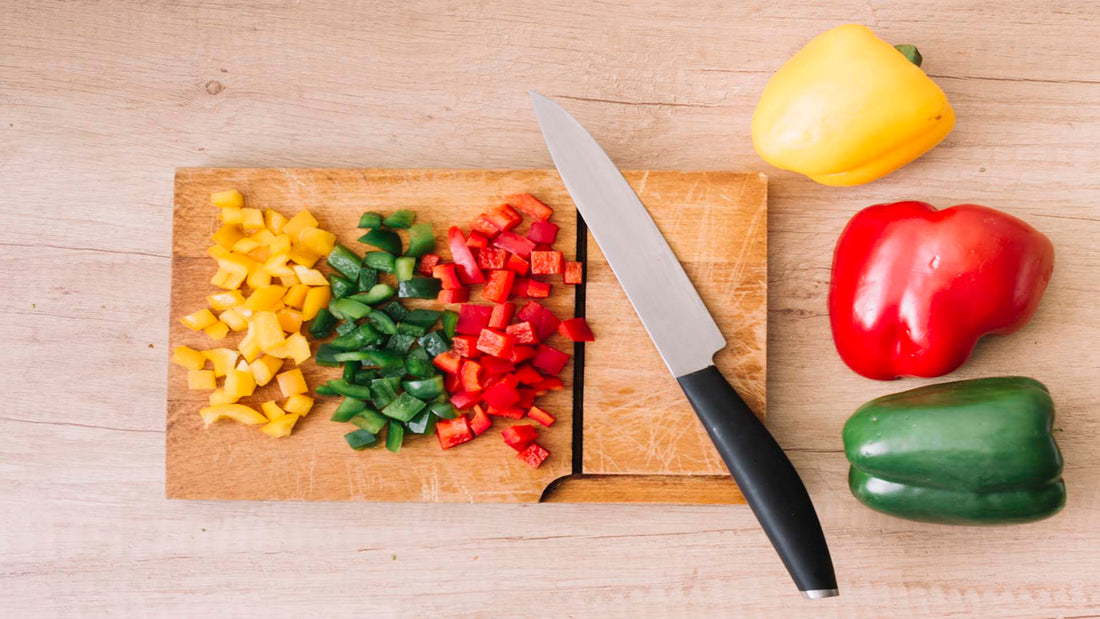A petty knife is a small, versatile kitchen knife suited for precision tasks. It typically features a blade length of 4 to 7 inches.
If you're an avid home cook or professional chef, you may have come across the term "petty knife" in your culinary journey. But what exactly is a petty knife, and why is it an essential tool in every kitchen?
A petty knife is a small, versatile kitchen knife suited for precision tasks. It typically features a blade length of 4 to 7 inches.
In this article, we will delve into what a petty knife is and explore common uses of Petty Knife.
What is a Petty Knife?
The term petty knife refers to a small kitchen knife. It excels in handling tasks that require precision. This knife is ideal for peeling, slicing, and shaping vegetables and fruits.
Origin
The petty knife originates from Japan. Its design is a blend of Western and Japanese cutlery, providing versatility and precision. It is a staple in both home and professional kitchens.
Features
Petty knives boast specific characteristics that make them stand out:
- Size: Typically ranging from 120 to 180mm, perfect for control.
- Blade: Razor-sharp and thin, allowing detailed cutting.
- Handle: Ergonomic for comfort and safety during use.
Different Types Of Petty Knives
The term "Petty Knife" may sound modest. But their role in the kitchen is anything but. These are versatile tools. They manage tasks that larger knives can't.
Below, explore the different types of petty knives.
Western Petty Knife

Think of the Western Petty knife as the reliable friend in the kitchen. It is sturdy. Great for precision work. Its key features include:
- Size: Typically between 4 to 7 inches.
- Blade Shape: Straight edge with a sharp point.
- Handle: Ergonomically designed for comfort.
It excels in cutting small fruits, vegetables, and herbs. It is also a go-to for detailed cutting tasks.
Japanese Petty Knife

The Japanese Petty Knife is a culinary masterpiece. It is crafted with precision. It stands out for:
- Size: Ranging from 3 to 6 inches.
- Blade: Thinner and lighter than its Western counterpart.
- Edge: Razor-sharp with a slight curve.
This knife is ideal for delicate tasks. Like peeling fruits or trimming meats. It's a mainstay in any chef's collection.

Common Uses Of Petty Knife
The Petty Knife versatile blade ideal for smaller tasks in the kitchen. Its agile handling allows for intricate work where larger knives fall short.
Below, explore the common uses of a petty knife that highlight its unique capabilities.
Food Preparation
When it comes to food preparation, the petty knife shines in its versatility. It excels in tasks that include:
- Slicing fruits and vegetables with precision and ease.
- Peeling skins from produce without wastage.
- Dicing ingredients for salads and salsas.
- Trimming fat from meat with control and accuracy.
Precision Cutting
Task precision is the petty knife’s specialty. It's perfect for:
- Creating thin slices of garlic, shallots, herbs, or chilis.
- Portioning small cuts of meat or cheese.
Garnishing
A petty knife is not only a tool but also an artist's instrument for garnishing. Utilize it for:
- Chopping nuts and chocolate for dessert toppings.
- Delicately cutting vegetables for plate presentations.
- Creating zest from citrus fruits for a flavor boost.
Maintenance Tips For A Petty Knife
Like any valued tool, a petty knife thrives with regular maintenance. Explore these straightforward tips to keep your knife in top condition.
Cleaning
To retain your petty knife's sharp edge and gleaming surface, cleaning is crucial. Begin by hand washing the knife using mild soap and warm water. Avoid dishwashers as they can damage the blade.
- Immediately after use, rinse off any acidic substances
- Use a soft sponge to prevent scratching the blade
- Dry thoroughly with a soft towel to prevent rust
Sharpening
A well-sharpened petty knife is a chef's delight. Routine honing maintains the edge between professional sharpening sessions.
- Utilize a honing steel weekly to align the edge
- Apply consistent angle and pressure
- Seek a professional sharpening service for optimal results biannually
Storage
Proper storage is the key to protecting your knife's edge. Refrain from tossing it into a crowded drawer.
| Method | Benefits | Precautions |
| Magnetic Strip | Eases access, displays knives | Avoid snapping the knife onto the magnet |
| Knife Block | Protects the blade, organizes knives | Insert with the spine, not the edge, leading |
| Drawer Insert | Minimizes clutter, secures knives | Opt for wood or rubber-lined inserts |
Conclusion
A petty knife shines as a versatile partner in the kitchen, adept at precision tasks. Ideal for delicate cuts, it's a culinary essential no chef should overlook. Embrace its capabilities, and you'll elevate your cooking skills to new heights.

